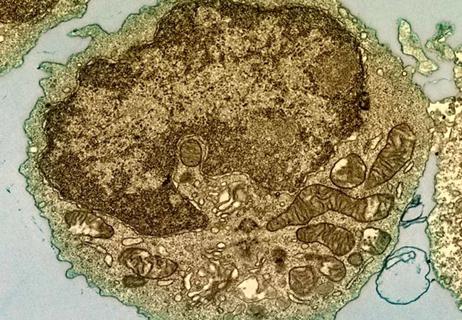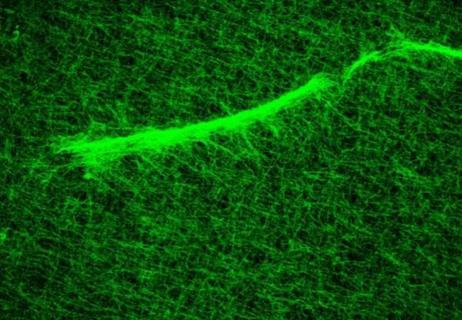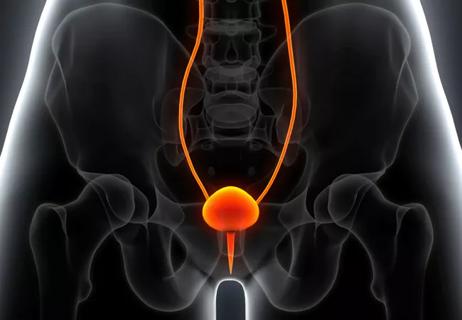Advertisement
Testable models of communities can identify effective strategies to address place-based inequalities of care

Cleveland Clinic researchers and their colleagues at Cleveland’s MetroHealth medical system are developing an innovative technology to study and test solutions for healthcare disparities that stem from where people live.
Advertisement
Cleveland Clinic is a non-profit academic medical center. Advertising on our site helps support our mission. We do not endorse non-Cleveland Clinic products or services. Policy
The researchers’ approach uses sophisticated computer data models known as digital twin neighborhoods (DTNs). Constructed using anonymized electronic health records (EHRs) from the two health systems, the DTNs are digital replicas of real communities, including biological, social and geographic data. The models aid in accurately representing complex economic, environmental and social factors that can lead to disparities among neighboring communities.
Modeling neighborhoods will allow the researchers to identify the most effective means to eliminate place-based health inequalities, which disproportionately affect racial and ethnic minorities and people with low incomes. Making the massive database of DTNs publicly available, as the researchers intend, will allow widespread investigation of population health improvement strategies.
The work is supported by a new $3.14 million grant to Cleveland Clinic from the National Institutes of Health.
“To help us begin to address and treat the root causes of disease, we need to understand what has led us to this point,” says Serpil Erzurum, MD, Cleveland Clinic’s Chief Research and Academic Officer. “Using innovative approaches like digital twin neighborhoods is the future of population research, and it will reveal how we can better address health disparities to make positive changes in our communities.”
“Where a person lives or works can shape their health outcomes, including life expectancy and risk of developing diseases like cancer or diabetes,” says Jarrod Dalton, PhD, Director of Cleveland Clinic’s Center for Populations Health Research and the DTN project’s principal investigator along with long-time collaborator Adam Perzynski, PhD, of MetroHealth’s Population Health Research Institute. “Americans from socioeconomically disadvantaged communities are more likely to have heart attacks and stroke, and are expected to live 10 fewer years than wealthier Americans. Our goal is to design an approach to help health systems, governments and organizations collaborate and strategize ways to address clear disparities.”
Advertisement
Increasingly, studies show that an individual’s socioeconomic status and the conditions in their immediate surroundings powerfully impact disease risk, health outcomes and life expectancy. Factors such as exposure to stress or environmental hazards and the availability of healthy food, stable housing, medical care and social support can exert even an greater influence on a person’s wellbeing than do traditional clinical risk determinants such as age and gender.
Northeast Ohio, like many urban areas, has sharp health disparities among communities with differing socioeconomic positions. For example, Cleveland’s Woodhill neighborhood and the city of Shaker Heights are only a mile apart but their residents’ average life expectancies differed by 23.2 years in 2015, according to U.S. Centers for Disease Control (CDC) estimates using death data geocoded at the census tract level.
“Neighborhood health disparities in Cleveland are severe, among the most severe in the country,” says Dr. Dalton. “This is the biggest problem in population health of our time. It stems from decades of residential segregation and corresponding disinvestment in communities that’s had an impact on people’s health and longevity.”
The concept of creating a virtual, testable digital model of a complex physical entity originated in industrial engineering settings during the last two decades. Adapting the approach to healthcare, DTNs allow researchers to perform observational health research on diverse simulated populations, evaluating the effects of factors such as race and socioeconomic status on disease prevalence and outcomes. Such research would be time- and resource-intensive in the real world.
The digital models’ coupling of spatial and aspatial modeling resources at the small-area level with representative, real-world data sources such as EHRs and U.S. Census files will add a new dimension to studies of population health and place-based health inequities, producing new insights and evidence-based interventions.
The incorporation of EHR data into population health modeling poses a number of significant challenges. These include:
Advertisement
Drs. Dalton and Perzynski and their collaborators have managed those issues in their previous research examining place-based health disparities.
In 2017, they reported results from an observational cohort analysis that used the geocoded longitudinal EHRs of 109,793 Cleveland Clinic Health System patients to evaluate relationships between neighborhood socioeconomic conditions, clinical predictions of patients’ atherosclerotic risk, and actual atherosclerotic heart disease rates. The analysis found that a demographically representative model developed by the American College of Cardiology and the American Heart Association to forecast heart disease risk systematically under-predicted risk in patients living in disadvantaged communities in Northeast Ohio. Living in a disadvantaged area appeared to be a powerful factor in an individual’s chances of developing heart disease.
In a subsequent and more ambitious project, the researchers built a regional health registry database called the Northeast Ohio Cohort for Atherosclerotic Risk Estimation (NEOCARE). The NEOCARE registry, which took two years to assemble, is derived from the EHRs of Cleveland Clinic’s and MetroHealth’s systems, spanning more than two decades of recordkeeping. It includes geocoded, death certificate-matched longitudinal data — demographics, diagnoses, procedures, medications, laboratory results and outcomes — of more than 3 million patients representing more than 70% of the population of Cuyahoga County, where Cleveland and its suburbs are located. The registry’s cohort covers the socioeconomic spectrum.
Drs. Dalton and Perzynski and their collaborators are using the NEOCARE database to create a digital model of the county’s population in order to predict life expectancies in more granular detail, which will further highlight place-based health disparities in the region.
With the help of the new NIH grant, Drs. Dalton and Perzynski and co-investigators Elizabeth Pfoh, PhD, and Glen Taksler, PhD, from Cleveland Clinic’s Center for Value-Based Care Research and Kristen Berg, PhD, Douglas Gunzler, PhD, and Yasir Tarabichi, MD, from MetroHealth plan to further develop their modeling infrastructure.
Advertisement
This includes creating a scalable, integrated data and computing environment called the Digital Twin Neighborhoods Platform (DTNP) accessible to any researcher interested in modeling health conditions and outcomes using the DTN approach.
“The DTNP resource builds on our past and ongoing work to make massive data resources on health inequalities more accessible and efficient,” says Dr. Dalton. “It will facilitate robust and widespread population health inquiries. These problems aren’t unique to Cleveland. They exist all over the country and globe. We’re designing an approach to help health systems, governments and organizations collaborate to highlight place-based issues and strategize ways to fix clear disparities.”
The NIH grant also funds some initial projects using the tool: assessing regional mental health initiatives on a neighborhood level; evaluating the potential impacts of introducing new services on cardiovascular disease burden in communities; and evaluating how frequent and/or economically-driven relocations of residence affect health outcomes.
“As a scientist, I have always wanted to lead a project that I felt was truly transformational. I feel like this is that project,” says MetroHealth’s Dr. Perzynski. “It has real potential to lead community-level policies and decision-making that improves health and creates equity. Evaluating technology like digital twins in the research space can make it easier for organizations to take a data-backed approach to public health interventions. Instead of building these models from scratch, other health systems and organizations can adapt the framework for their own needs.”
Advertisement
Advertisement

Discovery Accelerator Partnership with IBM Deploys Advanced Computing Technologies to Supercharge Healthcare Research

Cleveland Clinic is a Founding Partner in Quantum Innovation Hub

Expediting the future of healthcare

Leveraging Microsoft HoloLens and 3D printing to improve surgical outcomes

Lymphocenter investigates therapeutic resistance and more

The pseudokinase binds to proteins to form IPP

NCI grant supported organotypic model

A ‘fitness tracker for the bladder’ as replacement for urodynamic testing?